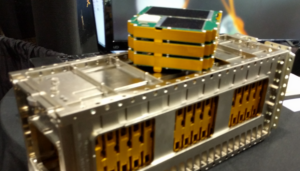The Feb. 20 Northrop Grumman Antares rocket sending the Cygnus cargo capsule to the International Space Station launched 30 ThinSats as part of a STEM program for middle, high school and university students. The projects from multiple states, including Virginia and Indiana, were overseen by Twiggs Space Lab LLC and sponsored by Virginia Space.
The Antares launched ThinSats into very low Earth orbit Feb. 20 to gather data for one to five days before reentering Earth’s atmosphere.
“We received Globalstar data in the first 11 minutes after deployment over the remote region of South Atlantic Ocean,” Matt Voss, NearSpace Launch chief operations officer, told SpaceNews. “NearSpace Launch and Virgina Space are still doing analysis of mission results and diagnostic of the STEM mission.”
The very low Earth orbit where ThinSats were deployed is important for climate research and space weather forecasts but difficult to study because of the high levels of atmospheric drag satellites experience, Hank Voss, NearSpace Launch co-founder and ThinSat inventor, said in a statement.
Since the first 60 educational ThinSats launched in 2019, NearSpace Launch redesigned ThinSats. The latest model includes GPS receivers and improved attitude control. ThinSats also are equipped with NearSpace Launch radios to transmit information via Globalstar’s satellite communications network.
With SBIR funding, NearSpace Launch is building ThinSats for NASA and the U.S. Space Force to serve as technology demonstrators.
When ThinSats first flew, 21 fit in a three-unit cubesat, measuring 10 centimeters by 10 centimeters by 30 centimeters. For the ongoing educational mission, 18 ThinSats fit in the same volume.
NearSpace Launch also is building ThinSats of various sizes to fly alone or link together in a daisy chain.
“You can change the width of ThinSats to make them thicker or thinner” as long as they fit in a cubesat form factor to take advantage of cubesat deployers, Matt Voss said.



